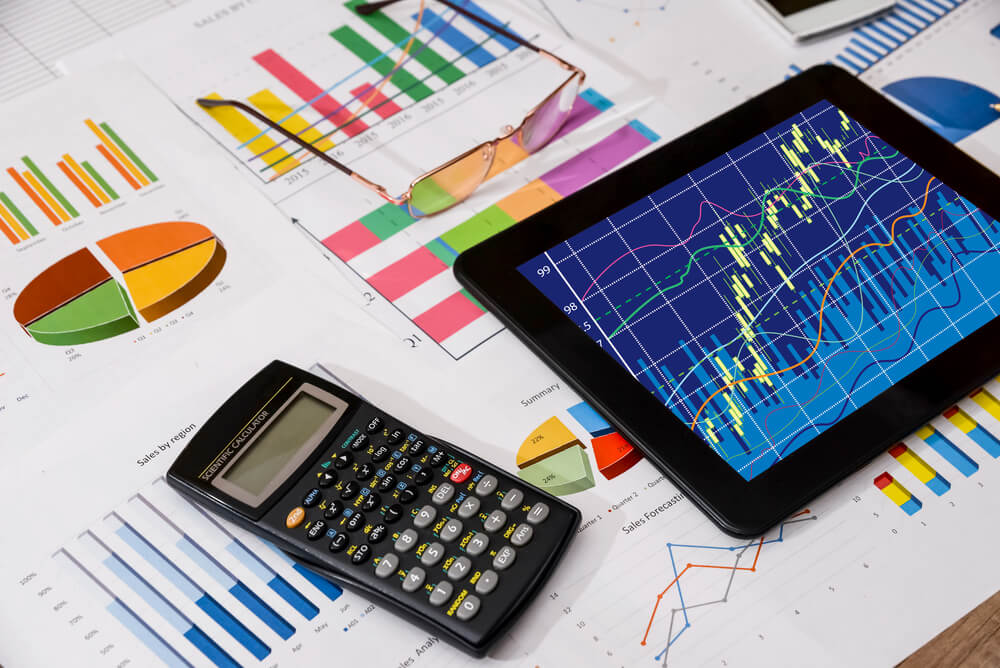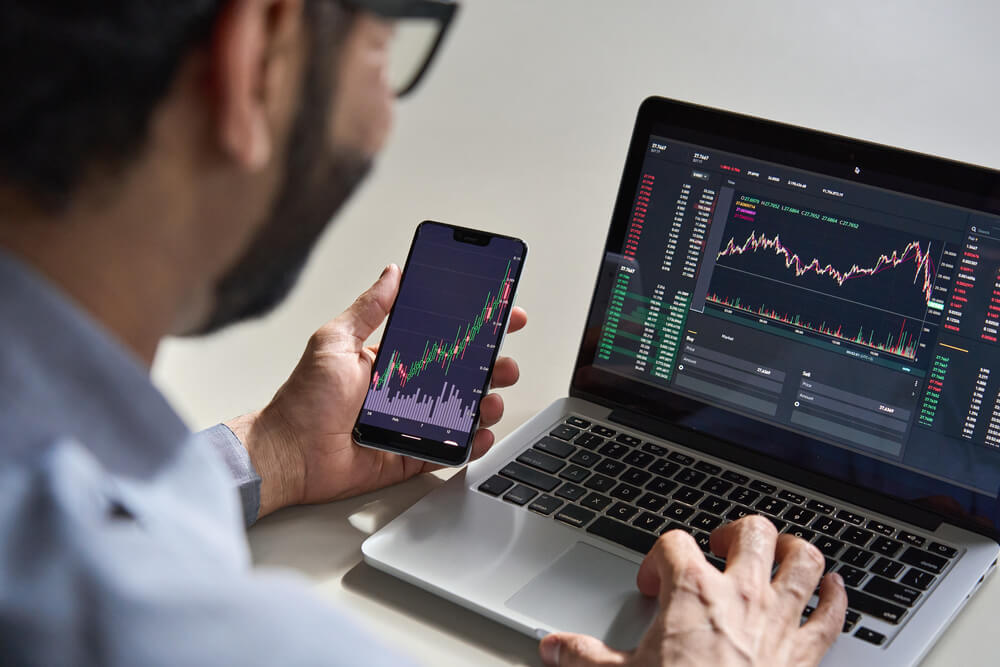The Forex market volume is immense. The world’s largest foreign exchange market accounts for $10 trillion of daily trading turnover. The figure is staggering, and the fact that anyone can participate in this currency market is equally astonishing. So, where should one begin, and which Forex trading strategies will prove most successful? Let’s dive in and explore together.
What is a trading strategy?
Trading in the Forex market without a strategy is akin to traveling without a map. You might make money or lose it, but you have no idea which outcome is more probable.
Choosing a Forex strategy is a crucial step for a trader. A trading strategy should align with your lifestyle and personality type. It’s not enough to read a strategy’s description; one must test it on a demo account, see which trading tools it performs best with, and most importantly, determine whether it fits your experience and goals.
We’ve compiled the most popular Forex trading strategies, so you can familiarize yourself with them, test them out, and choose the one that’s right for you.

1. Trend Trading
This is one of the most reliable and straightforward trading strategies in the Forex market. As the name suggests, this strategy type involves trading in the direction of the trend. A trader must first determine the overall trend direction, its duration, and strength, to understand the current trend’s strength and predict when the market might be ready for a reversal. With trend trading, a trader doesn’t need to know the exact direction or reversal time; they just need to recognize when to close current trades, locking in profits and minimizing losses.
Even when the market is trending, there will inevitably be minor price fluctuations that counteract the prevailing trend direction. Investing in the direction of a strong trend, the trader must be prepared to endure minor losses, knowing that, in the end, profits will outweigh losses as long as the primary trend persists. For obvious reasons, trend traders prefer trending markets or those oscillating between overbought and oversold thresholds with relative predictability.
Tools Used
To determine the direction and strength of the current trend, traders often rely on simple moving averages and exponential moving averages, such as MACD and the Average Directional Index (ADX). All moving averages are lagging indicators, which use past price movements to provide context to current market conditions. Besides offering insights into the direction and strength of the current trend, moving averages can be employed to gauge support and resistance levels.
Reversals are believed to be indicated in situations like:
- When the price fails to reach anticipated support and resistance levels.
- When a long-term moving average crosses a short-term moving average.
Instead of anticipating the direction of a reversal and opening a new position, a trend trader will use these signals to exit their current position.
Once a new trend emerges, the trader starts trading again in the direction of the current trend.
Pros and Cons
A trend trader needs to understand what’s happening in the present moment. Trend trading can be described as a reliable and consistent strategy. However, for effective trading, it’s essential to confirm the direction and strength of a new trend before opening a position.

2. Positional Trading
This strategy involves a trader holding onto their positions for an extended period – from a few weeks to several months. Such an approach requires the trader to view the market holistically and be able to endure its minor fluctuations.
Tools Used
Position traders typically employ a trend-following strategy. They rely on analytical data (slow moving averages) to detect trending markets and determine optimal entry and exit points. To discern micro and macroeconomic conditions that might influence the market and the value of the asset in question, positional traders utilize fundamental analysis.
Pros and Cons
Success or failure in positional trading hinges on the trader’s understanding of the market in focus and their risk management capabilities. To lock in profits at regular intervals and mitigate potential losses, some positional traders opt for a target trading strategy.

3. Range Trading
Range trading is grounded in the concept of support and resistance. On a chart, support and resistance levels can be pinpointed as the highest and lowest points reached by the price before reversing in the opposite direction. Together, these support and resistance levels constitute a trading range.
In a trending market, the price will surpass previous resistance levels, forming higher highs in an uptrend or lower lows in a downtrend. This creates a stepwise model of support and resistance.
When the price reaches an overbought level (resistance), traders anticipate a reversal in the opposite direction and sell. Similarly, when the price approaches an oversold level (support), it’s regarded as a buy signal. Ultimately, if the price breaches this established range, it could signify the imminent formation of a new trend. Range traders are interested in markets that oscillate between support and resistance levels without trending in one direction over a prolonged period.
Tools Used
Range traders use support and resistance levels to determine when to enter and exit trades and which positions to open. For this purpose, they frequently employ momentum indicators such as the stochastic oscillator and RSI.
Pros and Cons
Trading the lows and highs of flat markets can be a consistent and profitable strategy. Since traders aim to benefit from the current trend rather than predicting it, there’s also inherently lesser risk involved. Nonetheless, timing is paramount. Often, an asset remains overbought or oversold for an extended period before reversing in the opposite direction. To assume less risk, traders should await price reversal confirmation before initiating a new position.

4. News Trading
As a multinational market, Forex is influenced by global economic events. Understanding economic news events and their potential impact on currency pairs assists traders in anticipating short-term market movements or breakouts.
Key (scheduled) news events include:
- Interest rate decisions.
- Economic reports on national unemployment rates, inflation rates, Gross Domestic Product (GDP), non-farm payrolls, and national trade balances.
- Consumer and business confidence surveys.
No single event can be more critical than another. Instead of focusing on one variable, traders explore the interrelation among them in conjunction with the current market conditions.
It’s worth noting that unexpected events, such as natural disasters or political changes, can influence Forex, just like any other global trading market. However, these unforeseen events are not reliable indicators for use in a news trading strategy.
Tools Used
News traders rely on economic calendars and indices, like the Consumer Confidence Index (CCI), to predict when a change will occur and in which direction the price will move. With this in mind, they’ll look for price action to consolidate, which usually signals an impending breakout.
Pros and Cons
Trading the minor breakouts that occur over a short timeframe has a high profit potential. Of course, this carries greater risk. When the price consolidates, volatility escalates. If you enter a trade too early, you risk exiting the trade (and incurring losses) if the breakout doesn’t happen immediately or isn’t sustained. Starting early is part of the game, but starting too early can be reckless. More seasoned traders often await breakout confirmation before acting on intuition.

5. Swing Trading
This is a trend-following strategy. The aim of swing trading is to capitalize on short-term price momentum spikes. These minor surges and drops can sometimes contradict the prevailing trend direction. As such, swing trading demands a more confined view of the market: studying 15-minute, hourly, daily, and weekly price charts rather than analyzing broad market trends.
Given that swing trading requires swift actions and meticulous market monitoring, it’s usually favored by day traders who are prepared to track price momentum changes by the minute. Swing trading is classified as a short-term trading strategy. Unlike day trading, it requires traders to hold their positions overnight and they might stay in a trade for several weeks.
Tools Used
This strategy relies on both technical and fundamental forms of analysis. On the technical side, a trader uses momentum indicators and moving averages to analyze price movements over several days. From a fundamental standpoint, the swing trader often employs micro and macroeconomic indicators to determine an asset’s value.
Pros and Cons
Swing trading involves rapid price movement within a broad price range. Naturally, the potential profit comes with increased risk. The price momentum can shift swiftly and without warning, so swing traders need to be ready to respond immediately to momentum changes. To mitigate the risk of holding a position overnight, swing traders often limit their position size. While a smaller position size restricts their profit potential, it ultimately safeguards them from significant losses.

6. Scalping
Scalping is an intraday trading strategy: traders buy and sell currency with the intention of securing a small profit from each trade. In the Forex market, scalping typically relies on continuous price movement analysis and understanding the spread.
When a scalper buys currency at the current bid price, they anticipate that the price will rise enough to cover the spread and allow the trader to make a modest profit. For this strategy to be effective, the trader must wait until the bid price rises above the initial offer price and flip the currency before the price starts to fluctuate again.
Tools Used
Since scalpers heavily rely on the spread, it’s essential for them to have good relations with market makers, who determine the bid and ask prices for a given currency. Scalpers often hold professional trading accounts with brokers to gain access to lower spreads. Their success hinges on using a low-latency platform capable of executing multiple trades simultaneously, quickly and accurately.
Scalpers employ software for technical analysis and pattern recognition to determine: which position to take, breakouts and divergences, buy and sell signals during the target period, and to confirm trend direction and momentum. Like other intraday traders, they might monitor economic events that could influence short-term price movement.
Pros and Cons
If you make multiple trades a day, earning a few points per trade can quickly amount to a significant sum. However, handling such a vast volume of trades comes with its challenges. Success as a day scalper requires unwavering focus, a strong nerve, and impeccable timing from the trader. If a trader hesitates to buy or sell, they might miss their profit window and deplete their resources.

7. Day Trading
Day traders earn their title by focusing solely on intraday price movements and capitalizing on the volatility they present. These minor market fluctuations are associated with current demand and supply levels, not fundamental market conditions.
Tools Used
Intraday traders use various short-term trading strategies. Some trade based on news, using economic calendars and indices. Others might be scalpers, trading the same asset day in and out, analyzing intraday price movements using technical analysis, such as fast and slow-moving averages. If scalpers understand the overall direction the market is moving on a given day, they can follow the trend and close all their positions before the market closes.
Pros and Cons
When analyzing price movements over a short period, there will inevitably be more false signals due to the small sample size and limited context. Detecting a false signal and confirming the accuracy of your analysis can be a challenging task, especially when time is of the essence. For these reasons, day trading typically requires more experience and market familiarity. To succeed, day traders must practice effective capital management and be ready to respond quickly if the price moves against them.

8. Pullback Trading
A pullback refers to instances when a price briefly changes direction before resuming its movement in the direction of the dominant trend. Traders utilize technical analysis to pinpoint potential pullbacks and distinguish them from reversals, where the price changes its direction and doesn’t correct, thus forming a new trend. If a trader anticipates a price correction, they might decide to maintain their current position, assuming the prevailing trend will eventually continue. On the other hand, if a trader expects the market fluctuation to be an early sign of a reversal, they may decide to exit their current position and enter a new one aligned with the trend reversal.
Tools Used
To differentiate between pullbacks and reversals, many traders use Fibonacci retracement levels. According to this form of technical analysis, the retracement will conclude once the price hits the maximum Fibonacci ratio of 61.8 percent. For this reason, many traders utilize this 61.8% ratio for placing take-profit or stop-loss orders. Pullback traders aiming to profit on a trend reversal will also use the Fibonacci ratios of 38.2% and 50.0% as entry points and/or profit-taking points.
Pros and Cons
While using Fibonacci corrections can assist you in determining when to enter and exit a trade and which position to open, they should never be used in isolation. The most successful pullback traders validate breakout and reversal signals using other technical indicators like moving averages, trend lines, momentum oscillators, and candlestick price patterns.

9. Grid Trading
Grid trading is a breakout trading method that seeks to capitalize on a new trend as it forms. However, unlike other breakout trading strategies, grid trading eliminates the need to know the direction in which the trend will go.
In a grid trading strategy, traders set up a grid of stop orders above and below the current price. This “grid” of orders essentially ensures that, regardless of the direction the price moves, a corresponding order will be triggered.
Tools Used
Before placing buy and sell stop orders, traders first determine support and resistance levels and use this range as a guide to set orders at standard intervals. Support and resistance levels can be calculated using technical analysis or estimated by drawing trend lines on the price chart to connect price peaks (resistance levels) and troughs (support levels). Since grid trading doesn’t require understanding the direction of the breakout, orders can be placed in advance. Typically, grid traders lay out their strategy after market close and preemptively set orders for the next trading day.
Pros and Cons
While grid trading doesn’t require immediate actions, it requires careful monitoring. If your take-profit values don’t hit soon after a position opens — the trend reverses or stalls before continuing in the same direction — you might become vulnerable to losses. Besides this risk, a trader has to manage the inherent costs associated with holding multiple open positions. Once a trend manifests, it’s vital to cancel pending orders in the opposite direction to avoid accumulating interest on positions that aren’t profitable.
Conclusion
Each of the trading strategies described above has its unique advantages and disadvantages. When choosing a strategy, it’s crucial to consider experience and circumstances. If you’re just starting with Forex, intraday trading strategies requiring quick actions and managing multiple trades simultaneously might not be the best fit initially. Instead, opt for a simpler, long-term strategy, such as trend trading, which gives you the time required to learn technical analysis, practice sound capital management, and evaluate your results.
Every trader has a strategy that suits them best. Moreover, some strategies perform better in trending markets, while others are more efficient in range-bound or volatile conditions. Take time to understand the market you’re dealing with and pinpoint a suitable trading strategy.





